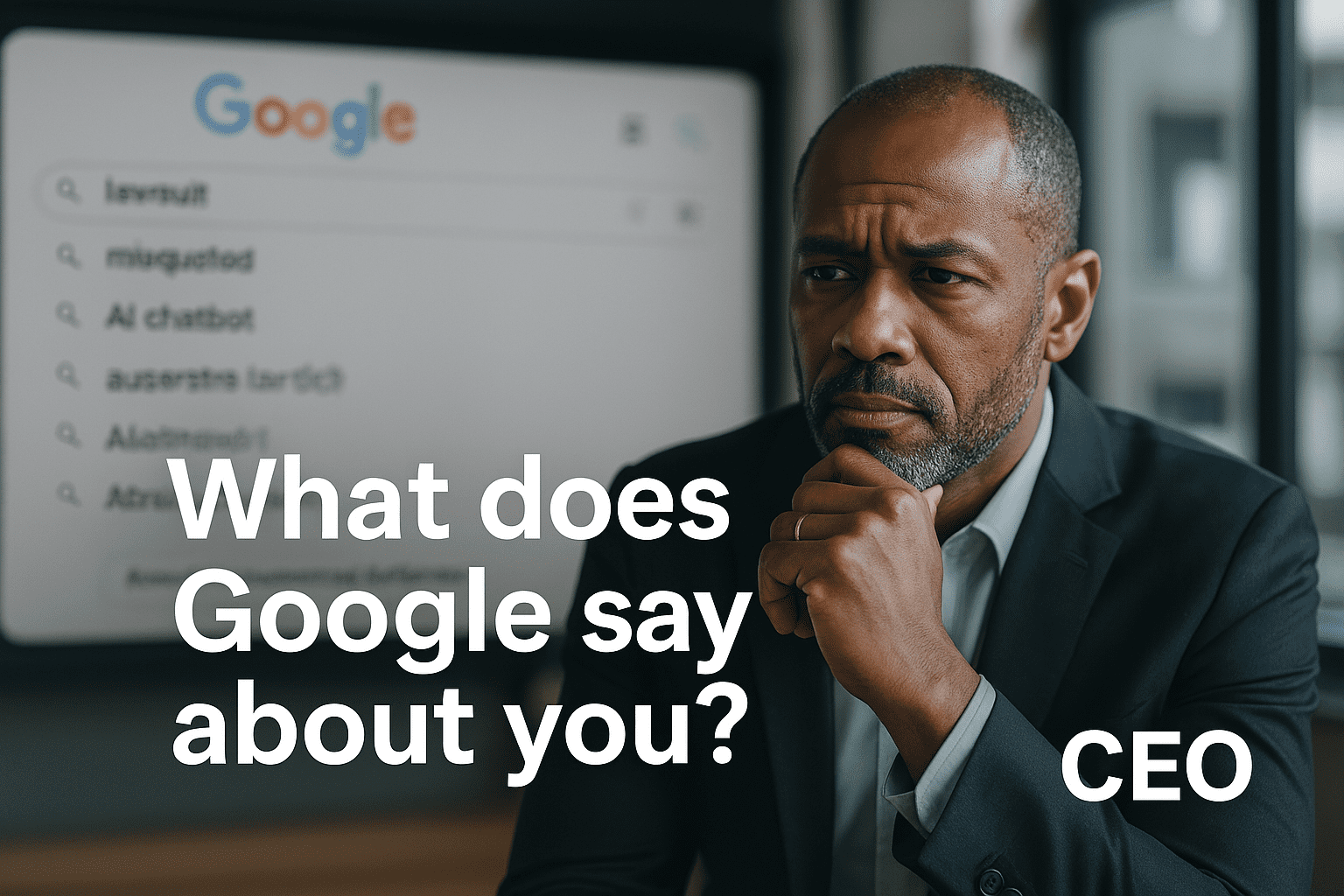Last Updated on October 24, 2024 by Steven W. Giovinco
Victims of sexual harassment will have their online reputation damaged.
Here are 9 ways to fix it.
Looking through the nearly six dozen of Harvey Weinstein’s alleged accusers shows startling impacts to their online reputation.
My friend Ann (not her real name) was sexually attacked years ago when she was just nineteen.
But when a reporter contacted her recently to do an article on the perpetrator and the multiple other victims, she felt elation but also despair: joy because of vindication; pain because her business would be damaged and linked to the perpetrator.
Coming forward against sexual predators risks reprisals and career damage. Like those left in the wake of Harvey Weinstein’s litany of alleged sexual harassment victims, my friend Ann was facing personal and professional devastation. But an unexpected result of standing up, however, is a long-lasting impact on the victim’s online reputation.
How?
Whenever a business, headhunter, agent, or prospective client–anyone–conducts a search online, the sexual assault article shows up prominently. This victimizes them again, perhaps in perpetuity, becoming their digital “Scarlet Letter”.
In looking through the nearly eight dozen Harvey Weinstein’s accusers, I find that ALL suffered a blow to their internet presence. As others come forward beyond Hollywood, those in politics, fine art, cable television, venture capital, comedy, publishing, new media, etc. are at risk too. This impact on their online reputation causes severe and potentially long-lasting damage. Here are ways it happens, and importantly, how to fix it.
Articles and News Quickly Appear Online
Not surprisingly, articles centered on sexual attack victims or those making inappropriate advances appear quickly online. Newspapers and major blogs such as The New York Times, HuffingtonPost, Cnn.com, are considered trustworthy by Google and almost always appear at the very top of search results. Industry-specific sources too carry power depending on the business and rank highly, such as Hollywood Reporter, The Hill, Artforum, BuzzFeed, Abovethelaw.com, and others. Articles with salacious subjects draw attention, and the more clicks, the more the piece rises up above the victim’s existing positive sites. This can linger becoming a permanent part of their online reputation, unfortunately.
Smear Campaigns
Expect the perpetrator to lash back creating a smear campaign to discredit the victim. This is horrible but common. Their response can be in the form of blogs, articles, or social media posts, enlisting help from co-workers, partners, unscrupulous lawyers, private investigators, or even hire people to generate negative information. This is particularly pernicious and difficult to combat.
Trolls Attack
Hiding behind the cloak of anonymity, “trolls” post deliberately provocative messages to newsgroups, message boards, blogs, or on social media, condemning the accuser, slamming their legal representation (if they have one), creating shaming memes, or crafting harshly critical stand-alone websites. Additionally, it’s not unheard of for unscrupulous competitors or others to create untrue damaging comments. In the age of viral social media, this can proliferate quickly, causing further and continued damage to the victim’s online reputation.
Continued Negative Association
The person hurt by the sexual perpetrator could be linked to them–forever. Even though they have been assaulted, the woman or man will continue to be connected to their assailant as articles, tweets, comments, and blogs appear afterward or appear in search results. Even if the subsequent pieces are positive, their names are still associated with those who violated them.
Their Business Becomes Invisible
One problem that many don’t think of is that the victim’s actual business “disappears” online. Conducting a Google search for the person hurt by the perpetrator shows that these sex- or harassment-related articles appear prominently, often filling the first few pages or more of search results. When this happens, their name, profession, or business links get pushed down off the first page of Google. As a consequence, an actress, consultant, lawyer, real estate agent, store, writer, business, student, etc. will not be found online. This can be extremely damaging. The reason is that it effectively makes their real brand or business invisible, resulting in a devastating loss of sales, clients, and trust. This little-known but crucial repercussion can cause long-term and lingering damage to their online reputation.
New Unrelated Accusers Creates Cycle
As additional people come forward, new content could reference previous but unrelated victims. This creates a snowball effect: as additional revelations occur, new articles are written, and these push down the real and legitimate accomplishments of the victim, seemingly wiping out their own vast professional experience. This forces them to relive their disturbing sexual ordeal again online.
Impossible to Remove
Once something is online, it’s nearly impossible to remove. This means that the woman’s or man’s life could always be linked to their sexual violator. News articles are almost always impossible to delete, even if they are factually wrong or appear libelous. Editors at newspapers ignore nearly all takedown requests, as do webmasters and ISPs. Facebook comments or other social media posts are protected by free speech–so again, no matter how inappropriate or incorrect or they might be–they won’t be removed. The only exceptions are copyrighted materials such as photos or videos published without the victim’s permission, or content that violates the social media platform’s terms. But these can be long shots and expensive to litigate.
Unfortunately, once it’s on the internet, it’s there forever.
The Power of Wikipedia
In looking through the dozens of Harvey Weinstein’s alleged victims, ALL are mentioned on Wikipedia, either in related articles or directly on their own dedicated page. Since Google ranks Wikipedia highly, these appear at the top of search results and thus continue to link innocent victims with their accused sexual perpetrators. While Wiki articles can be created or modified by anyone, they can also be changed by an editor if deemed newsworthy–thus making it nearly impossible to erase. Remember too that you don’t have to be famous to have a Wikipedia page since anyone can create one.
Unrelated Sources and Related Reputations Ruined
What if the victim’s name comes up inadvertently from a seemingly unrelated source? Maybe a family member appears in the news, the company they work for wins an award, or the lawyer who represented them is victorious in another harassment case. All of these could continue to keep the related association to the victim alive, hurting their web reputation yet again. As a result too, through no fault of their own, these related businesses or people could have their own web reputation ruined because of their indirect connection to the sexual harassment case.
Those with Less Web Content Are Vulnerable
A non-famous person could have their online reputation ruined more than a famous one, as can someone who has less of a web presence. When there are few platforms or websites such as LinkedIn, Wikipedia, their own website, Facebook, Twitter, Pinterest, Youtube, Instagram, Vimeo, college alumni sites, IMDB, Avvo, etc., the more likely the negative article will quickly move to the top of searches–and stay there. Also, it depends on the source: the New York Times, LA Times, Wall Street Journal, BBC, and other prominent sites are much more likely to rise above the victim’s web properties than an article posted on a small personal blog.
9 Ways to Repair a Damaged Online Reputation
It is possible to repair a victim’s online reputation. Building positive content-links, blogs, sites- eventually push down the sexual harassment-related links, freeing them to get back to their life. It can be a long-term, complex process, however, and require working with a reputation management specialist. Here are eight tips to help.
1. Acknowledge Feelings and Don’t Respond Directly
Usually, if something negative appears, ignore or delete it and try to stay calm. Questions like “Why is someone doing this?” or, “I’ll get back at them,” or, “What will happen-I feel violated again,” are common feelings. Have them, but don’t do anything immediately. After a few hours or a few days, plan a strategy on how to move forward.
DON’T immediately start writing attack emails.
DON’T just start writing a blog without thinking first. Instead, try to review the facts and get ready for the next step.
2. Try to Remove the Bad Content
As mentioned above, once something is online, it’s usually there forever. However, there are some exceptions. Facebook comments or other social media posts can be deleted but only if they violate their platform’s terms. Comments responding to blogs or other posts may be taken down if they include specific personal information such as home addresses, home phone numbers, bank accounts, and social security numbers.
Photos, videos, presentations, or articles published without the victim’s permission might be removable due to copyright violations.
3. Be Proactive
One of the best ways to mitigate the impact of sexual harassment articles from appearing prominently is to build an online reputation defense. This includes creating a strong web presence making the victim’s reputation less susceptible to damaging articles, disparaging remarks, trolls, negative comments, or a purposeful smear campaign by the perpetrator.
4. Monitor Search Results
Monitoring an online reputation is useful to catch articles quickly. Google Alerts is free and only requires a Google account. Start here at this link: http://www.google.com/alerts. To create a Google Alert, enter the victim’s name or business; if it’s a common name, include other attributes, such as, “Jane Smith Attorney”. To immediately receive email notifications, select “As-it-happens” under “How often.”
5. Lockdown Web Platforms
To minimize “trolls” and negative comments, lockdown web properties. Consider limiting access only to known friends or connections. Although each platform is different, most provide ways to prevent unwanted comments. There are ways to limit LinkedIn, Facebook, WordPress, and other accounts, but since Twitter is a common way for perpetrators to attack, here are some specific details. By default, tweets are Public, meaning that they are visible to anyone, whether or not they have a Twitter account. In privacy settings, Tweets can be protected so that only followers can see messages and respond to messages. Here’s how:
- Go to account settings by clicking on the gear icon at the top right of the Twitter page and selecting Settings from the drop-down menu.
- Scroll down to the Tweet privacy and Safety section and check the box next to Protect your Tweets.
- Click the blue Save button at the bottom of the page and enter your password to confirm the change when prompted.
6. Don’t Delete Platforms; Build Them
Hiding online is not an option. It might be tempting to delete any and all existing platforms and social media accounts to erase a damaged web presence, but this only makes the negative predatory links stand out. Instead, create or update sites, such as Facebook, Twitter or LinkedIn, Pinterest, Instagram, Crunchbase, Google Plus, Youtube, Vimeo, etc. Be sure to complete every field in profile, bio, and other sections, add a profile photo, and most importantly, add links back to your website. Then share everything on social media (well, nearly everything). Promote content—blog posts, news sites, articles, and press releases—by Tweeting daily; posting on Facebook once a day, and by adding content on LinkedIn weekly. Create industry-specific sites: if the victim is in film, use IMDB.com; if a lawyer, claims an Avvo.com profile; for financial professions, use Crunchbase.
7. Create New Content
Write blog posts but stay clear of any controversy. Definitely avoid mentioning the harasser, the incident, or responding to others since this will only make the issue more visible online. Instead, write or add comments focused on topics that solve a common industry problem or an important news development. Sites such as Medium.com are very helpful in online reputation repair. Keep it focused on offering a solution and giving away good information; avoid pure selling.
8. Report Bad Behavior
If bad behavior, negative comments, or personal attacks appears, report them. To stop harassing messages on Twitter, visit this link for more information: https://help.x.com/en/rules-and-policies/x-report-violation. If it’s abusive, breaches privacy or has harassed and violent threats, complete the Twitter form. Also, try these resources:
- Stop Bullying | @stopbullyinggov
- National Crime Prevention Center on Cyberbullying
- Cyberbullying Research Center
- Connect Safely | @connectsafely
9. Work with An Reputation Management Specialist
Consider working with an online reputation management specialist to repair the damage. A good reputation manager is hands-on and focused on customized solutions since it’s very important to be mindful of potential online “landmines”, sensitive topics, and retaliation by trolls. Start the repair by conducting thorough research of the victim and their business; identify all existing articles and links–both good and bad; create excellent content, blog posts, presentations, images; and share in the right places. An average reputation repair can take six to twelve months, depending on the number of links, power, and position in Google searches. Costs reflect this arduous process–unfortunately, there is no magic delete button. Consider having the online reputation repair included in the legal settlement, if there is one.
Bottom Line
There are many devastating and long-lasting scars that sexual predators force on their victims. Unfortunately, the devastation can spread and linger online. Hopefully, this will change in the future, and women and men can step forward without fear of online reprisal or reputation damage. But until then, there are ways to repair damage to their online reputation. If you find this article helpful, please feel free to share it.




